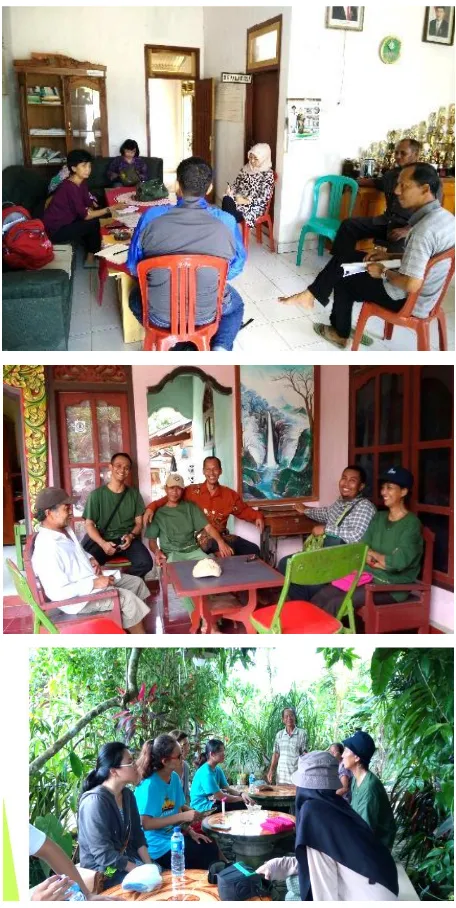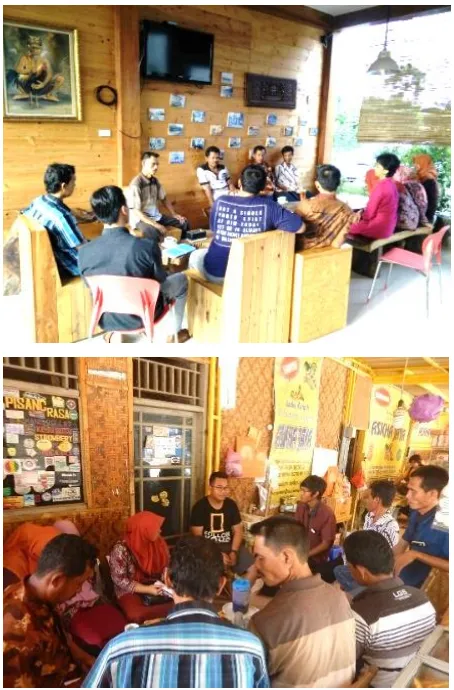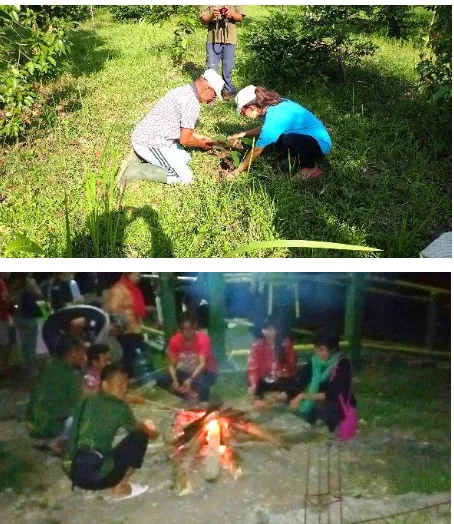Dewan Penyunting
Erdi Suroso (GS ID: gQREgY4AAAAJ)
Sri Ratna Sulistiyanti (Scopus ID: 36606902600)
Nina Yudha Aryanti (GS ID: paUxl88AAAAJ)
Sumaryo
Chandra Ertikanto
Rahmat Safe’i (Scopus ID: 56073928700)
Elly Lestari (GS ID: RB6ylcgAAAAJ)
Citra Dewi
Lay Out
Afri Yudamson (Scopus ID: 56596848500)
Titin Yulianti (Scopus ID: 56516854300)
Kholik Farijal
Distribusi
Ina Iriana
Siti Marbiyah
Mitra Bestari
Okid Parama Astirin (UNS) Wisnu Nurcahyo (UGM)
Hefni Effendi (IPB) Andri Zainal (Unimed)
Sarono (Polinela)
Wan Abbas Zakaria (Unila)
Muhammad Akib (Unila) Sri Waluyo (Unila)
Penerbit
Lembaga Penelitian dan Pengabdian Universitas Lampung
Alamat Redaksi
Lembaga Penelitian dan Pengabdian Universitas Lampung
Gedung Rektorat Lt 5 Universitas Lampung
Jl. Prof. Soemantri Brojonegoro No. 1 Bandar Lampung 35145
Telp: +62 721 705103 Fax: +62 721 770798
Website: http://jss.lppm.unila.ac.id
jss.lppm@kpa.unila.ac.id
Jurnal Pengabdian
Jurnal Pengabdian kepada Masyarakat
Jurnal Pengabdian
Jurnal Pengabdian kepada Masyarakat
SAKAI SAMBAYAN
e-ISSN 2550-1089
Volume 1, No. 2, Juli 2017
SAKAI SAMBAYAN — Jurnal Pengabdian kepada Masyarakat
Diterima pada: 11 Mei 2017 || Di-review pada: 30 Mei 2017 || Disetujui pada: 12 Juli 2017
BUILDING A COMMUNITY BASED ECOTOURISM WISATA DESA WAY
KAMBAS IN BRAJA HARJOSARI: AN INDIRECT TOOL FOR WILDLIFE
MITIGATION CONFLICT IN WAY KAMBAS NATIONAL PARK
Elly L. Rustiati
1, Jani Master
1, Nuning Nurcahyani
1, Danang Wibowo
2, Priyambodo
1, Eka
Sulpin Ariyanti
2, Elsa Virna Renata
11Department of Biology, College of Mathematical and Natural Sciences, University of Lampung 2
Magister of Environmental Sciences, University of Lampung
Corresponding author: ely_jazdzyk@yahoo.com
Abstract
Way Kambas National Park is facing human-wildlife conflict due to most of its borderline with settlement areas. Braja Harjosari, one of 37 villages next to the national park, has agricultural damage and economy lost due to wildlife conflict especially sumatran elephant. Braja Harjosari has great landscapes including river, swamp and traditional agriculture; diverse culture and unique social daily life. Indirect approach for wildlife conflict mitigation has been done by exploration and empowerment of its natural potential resources for community based ecotourism program, called Wisata Desa Way Kambas. With the close accompaniment, the ecotourism program gives great alternative income for the local people in Braja Harjosari. This alternative creative economy may serve human-elephant conflict mitigation, and may play an important role for gradually changing local people negative perception on sumatran elephant.
Keywords: Conflict mitigation, sumatran elephant, Braja Harjosari, Wisata Desa Way Kambas, ecotourism
1. Introduction
Wildlife-human conflict has been a problem in conservation areas (Lamarque, 2008; Zubiri and Switzer, 2001) and sumatran elephant Elephas maximus sumatranus, is one of them. Way Kambas National Park (WKNP) which is home for this great mammal, has a unique characteristic, most of its borderline is directly next to the settlements. There are 34 villages next to WKNP. This unique character has both positive and negative impacts. Illegal logging, poaching and burning are problems faced by WKNP. Due to their direct contact with WKNP, disturbance of wildlife entry, especially elephant, to the settlement areas has significant negative impact. It includes the lost and ruin of traditional plantation such as corn, banana, palm oil, and padi field. Conflict mitigation has been
done and is still on, and local people’ economical
lost is unavoidable.
There are approximately 200–250 elephants with around 75 individuals involed in wildlife-human conflicts. WRU (WCS-TNWK) (2013) estimated ±314 Elephant Human Conflicts (EHC) between October 2013 - September 2014, based on
community report, patrol and direct
monitoring/visit. The highest EHC is between December 2013 - March 2014, rainy season,
related to local people’ planting pattern surrounding Way Kambas National Park. Lost and damage of 17 villages include highest damage on crops (corn, padi and cassava) (76.73 %), with the highest cassava (63.21 % ) (WCS-TNWK, 2013).
The most frequent conflicts were on December - March, May-June, and August. In general, less damage was on crop area (16.23%) and the number of standing crop (58,37 %) (including banana, coconut, rubber), but the number of crops species (10,71 %), from 25 to 31 different species between October 2013 - September 2014. Due to the EHC, loosing local people conservation support becomes a problem in WKNP. Conflict mitigation has been done to minimize the damage and the wildlife population decrease.
SAKAI SAMBAYAN — Jurnal Pengabdian kepada Masyarakat 42
social, culture. Braja Harjosari has a high natural landscape (river, swamp, padi field, traditional plantation, garden) as well as social livelihood and culture. Having this diversity can be advantages as the base of economy building, such as ecotourism.
Wisata desa Way Kambas, a traditional ecotourism program, is a choice for indirect EHC. Ecotourism is natural resources use based program. Ecotourism challeges were on benefit share and accesibility (Butarbutar dan Soemarno, 2013). The recognition on potential local resources of buffer villages is important in developing creative economy innovation based ecotourism program as indirect approach for EHC.
Dusun 7 and Dusun 8 are two of eight dusun, sub area, in Braja Harjosari, East Lampung. Of 1075 ha area, the largest area is padi field (437 ha), crops (260 ha) and vegetable field (147 ha). Of 1477 families, with 5231 community members, mainly famers. Braja Harjosari has landscape diversity such as open area, river, swamp, plantation as well as culture and local wisdom (Profil Desa Braja Harjosari, 2012).
Monthly income is 1-5 million/month (Suhada 2015, Pers. Comm.). Dusun 7 has Balinese community with its special religious and cultural back ground and local wisdom. Fish pond, guava plantation owned by individuals, house gardenings, poultry, traditional farming, as well as Balinese and Javanese cultures are the local richness.
The building of traditional ecotourism has been done in conflict areas (Chaoprayoon and Panyadee, 2013). Wisata Desa Way Kambas, is an indirect approach on wildlife mitigation conflict in WKNP and Braja Harjosari is one potential buffer village to start with survey its local richness, service product for their ecotourism program, including homestay and their daily livelihood (Pusiran and Xiao, 2013), guava and corn plantation, padi field, traditional market (Figure 1). Survey and group discussion were conducted, especially with Wisata Desa team of Braja Harjosari.
Figure 1. Community based ecotourism of Braja Harjosari, Wisata Desa Way Kambas, homestay survey in Dusun 8 and local wisdom story telling
by Pak Mangku, Dusun 7.
SAKAI SAMBAYAN — Jurnal Pengabdian kepada Masyarakat 43
Diterima pada: 11 Mei 2017 || Di-review pada: 30 Mei 2017 || Disetujui pada: 12 Juli 2017 business like Nuwono Tasya Guest House and
Pusat Oleh-Oleh Khas Lampung Askha Jaya in Bandar Lampung (Figure 3).
Figure 2. Tourists visit in Braja Harjosari, enjoying grilled corn and experiencing padi
planting.
Figure 3. Improving local ecotourism skill,
organization and community based earning through group discussion, attending the local government meeting, comparative study to Pusat oleh-oleh khas
Lampung Askha Jaya and Nuwono Tasya guest house.
Perception transfer for wildlife was indirectly delivered during the program. One of
the tourists visit, during the dinner in ―bakar ikan‖
grilled fish package, the visitors shared their dinner with local people and rangers who deterred the coming elephant group in adjacent village. Planting program was also introduced to show their support on WKNP reforestation. In their visit to Elephant Training Center, introducing the captive elephants and their well being gave a new perspective for both tourist and local people (Figure 4).
SAKAI SAMBAYAN — Jurnal Pengabdian kepada Masyarakat 44
can be applied, more respect to local wisdom and local well being.
Figure 4. Perception transfer for wildlife as indirect support for mitigation conflict and
conservation education
4. Conclusion
Wisata Desa Way Kambas in Braja Harjosari is raising awarness of ecotourism product, strengthening its agriculture, farming, social and culture for ecotourism services, improving local ecotourism skill, organization and community based earning and encouraging perception transfer for wildlife.
Acknowledgement
Our high gratitude to TFCA Sumatera through Consorcium Alert-Unila 2013-2015 and continued by Kementrian Riset, Teknologi dan Pendidikan Tinggi, Hibah Ipteks Bagi Masyarakat Baru Tahun Anggaran 2016 for financial supports, our dearly friends of Braja Harjosari, East Lampung, Way Kambas National Park, related institutions, NGOs for big effort and great team works. Our special thanks to WCS IP, WWF Indonesia for having Braja Harjosari in their works.
References
Butarbutar, R. and Soemarno. 2013. Environmental effect of ecotourism in Indonesia.
Journal of Indonesian tourism and development studies 1 (3): 97-107.
Chaoprayoon, P. and C. Panyadee. 2013. The Local Economic Promotion through the Creative Tourism Travelling Route: The Practical Application for Chiangrai Province, Thailand. GSTF Journal on Business Review (GBR) 3 (1): 123-128.
Lamarque, F. Et al. 2008. Human-wildlife conflict in Africa- An overview ofcauses, consequences and management strategies. Working paper of IFCW and FAO, Rome.
Profil desa Baraja Harjosari. 2012. Laporan.
Pusiran, A.K. and H. Xiao. 2013. Challenges and community development: A case study of homestay in Malaysia. Asian social science 9 (5): 1-17.
Roshan, R., R. Chakraborty, dan P. Shrestha. 2012. Human- wildlife conference: Challenges for conservation and livelihood security in Sikkim and Darjeeling. Indian Mountain Initiative SMDS 11 Compendium.
Wildlife Conservation Society- Indonesia Program (WCS-IP). 2014. Laporan tahunan program WCS-IP di Taman Nasional Way kambas Provinsi Lampung tahun 2013 – 2014. Laporan. World Park Congress Recommendation 20. 2003.
Preventing and mitigating human- wildlife conflict – IUCN- World Park Congress.
SAKAI SAMBAYAN — Jurnal Pengabdian kepada Masyarakat 45
Diterima pada: 11 Mei 2017 || Di-review pada: 30 Mei 2017 || Disetujui pada: 12 Juli 2017 conflict with farmers in Africa. People and
Wildlife Iniciative Wildlife Conservation


